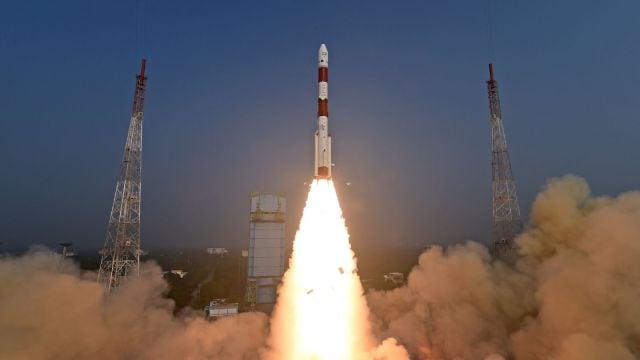With successful in-orbit tests, space startups validate technology on ISRO’s POEM platform
The space agency’s POEM platform has standard interfaces and packaging for power generation, telemetry, tele-command stabilisation, orbital-station keeping and orbital maneuvering.
 ISRO's PSLV C-58 mission launch on Monday. (ISRO via X.com)
ISRO's PSLV C-58 mission launch on Monday. (ISRO via X.com)Two Indian space technology startups on Thursday confirmed the success of tests aboard the Indian Space Research Organisation’s (ISRO) PSLV C-58 mission that launched on Monday. The launch and the tests were part of ISRO’s POEM (PSLV Orbital Experimental Module) initiative.
The space agency’s POEM platform has standard interfaces and packaging for power generation, telemetry, tele-command stabilisation, orbital-station keeping and orbital maneuvering. This allows space agencies and private companies to design, develop and validate experimental orbital payloads.
Under its standard configuration, ISRO’s PSLV rocket is a four-stage rocket. The first three spent stages fall back into the ocean, while the final stage (P4) ends up in space as junk after launching satellites into the orbit. However, the POEM initiative uses the spent final stage as a “stabilised platform to perform experiments.
Aboard the POEM mission, Hyderabad-based Dhruva Aerospace validated its P-30 satellite platform and its subsystems, and Bengaluru-based Bellatrix Aerospace validated its Rudra and Arka propulsion systems.
✅ MISSION SUCCESS
Dhruva Space is open for business as a hosted payload solution provider; declares success of #LEAPTD platform, onboard @isro’s PSLV-C58 POEM-3.
Read more: https://t.co/jbajyKhWmO pic.twitter.com/qyi8V0T8CZ
— Dhruva Space (@DhruvaSpace) January 3, 2024
The validated subsystems of the P-30 platform include On-Board Computer, Ultra High Frequency (UHF) TT&C Module, Beacon in UHF, Attitude Control System with a Reaction Wheel from Comat, and Power Distribution Board.
🚀 We are SPACE QUALIFIED! 🛰️
ARKA & RUDRA propulsion system are successfully space qualified onboard PSLV C-58 POEM-3 mission on the New Year Day!
We now open doors to supply propulsion systems globally! @isro @INSPACeIND @NSIL_India
Read more: https://t.co/DVWhNuxW0C
— Bellatrix Aerospace (@BellatrixAero) January 4, 2024
Bellatrix’s Rudra green propulsion system replaces the hazardous propellant hydrazine with one that is non-toxic, environment-friendly and high-performing, according to the company. Its Arka electric engine can propel spacecraft using electricity instead of chemical propellants.







